It looks like you're using an Ad Blocker.
Please white-list or disable AboveTopSecret.com in your ad-blocking tool.
Thank you.
Some features of ATS will be disabled while you continue to use an ad-blocker.
share:
I forgot to add this yesterday.
Yggdrasil wiki
So Odin's horse = "Gallows".
Ok so in our modern terminology the Gallows are used to hang people by rope for execution.
In French it is simply just "Power/Potency".
Let's check the etymology:
Cross, branch, pole?
So they actually referred to both Yggdrasil AND Jesus's crucifixion cross as both Gallows, iterating the same concept.
Ok so let's look further...
Yew Tree.
Thew Yew is under the genus "Taxus", which is Latin and translates to two things - Yew and Badger.
An interesting note is that horses are especially susceptible to Yew poisoning. The male Yew also has the highest allergy rating while the female Yew has the lowest (because it traps pollen from the male).
Oh and "It has been suggested that the Sacred Tree at the Temple at Uppsala was an ancient yew tree."
Another bizarre coincidence is that yggr = "terror", and the PIE root for terror is "tres", which is very close to the word 'trees' and also is Spanish for 3.
It also says that in Old English terror could be "broga", which a brogan is a shoe (in the sense of 'holding the tongue' of the shoe).
Broga Yoga is a men-oriented yoga course that incorporates functional fitness exercises.
Broga Hill is an important location in Malaysia.
It is the location of Sak Dato Temple, which is quite the tourist locale.

That's the monkey deity in a strange pose (almost triskelion-ish).

That's Kwan Yin.
So Kwan Yin is the entity that listens to prayers and cries, and answers them. In Japan it's often depicted with a "Wishing Gem".
The wiki is extremely deep, so here's a link- Guanyin
Guanyin is the bringer of Blessings, just like Fortuna. She can make the ugly beautiful, and heal the sick. She teaches the law (Dharma).
One interesting part is the tales of Miaoshan, who was so good and pure of heart that she took on the guilt of her own executioner by forgiving him and then went into Hell, where she transformed the place into a paradise and brought many suffering sinners into Heaven.
In one tale (Journey to the West) she aids the Monkey King, Sun Wu Kong (King Kong) and ensures he follows through on his quest.
Another interesting correlation is Tara, the "Mother of the Universe" and "Mother of Liberation".
Yggdrasil wiki
The generally accepted meaning of Old Norse Yggdrasill is "Odin's horse", meaning "gallows". This interpretation comes about because drasill means "horse" and Ygg(r) is one of Odin's many names. The Poetic Edda poem Hávamál describes how Odin sacrificed himself by hanging from a tree, making this tree Odin's gallows. This tree may have been Yggdrasil. Gallows can be called "the horse of the hanged" and therefore Odin's gallows may have developed into the expression "Odin's horse", which then became the name of the tree.[1]
So Odin's horse = "Gallows".
Ok so in our modern terminology the Gallows are used to hang people by rope for execution.
Permanent Gallows may be permanent to act as a deterrent and grim symbol of the power of high justice (the French word for gallows, potence, stems from the Latin word potentia, meaning "power").
In French it is simply just "Power/Potency".
Let's check the etymology:
(source also of Old Frisian galga, Old Saxon galgo, Middle High German galge "gallows, cross," German Galgen "gallows," Gothic galga "cross"), from PIE *ghalgh- "branch, rod" (source also of Lithuanian žalga "pole, perch," Armenian dzalk "pole").
Cross, branch, pole?
In Old English, also used of the cross of the crucifixion.
So they actually referred to both Yggdrasil AND Jesus's crucifixion cross as both Gallows, iterating the same concept.
Ok so let's look further...
A third interpretation, presented by F. Detter, is that the name Yggdrasill refers to the word yggr ("terror"), yet not in reference to the Odinic name, and so Yggdrasill would then mean "tree of terror, gallows". F. R. Schröder has proposed a fourth etymology according to which yggdrasill means "yew pillar", deriving yggia from *igwja (meaning "yew-tree"), and drasill from *dher- (meaning "support").[1]
Yew Tree.
Thew Yew is under the genus "Taxus", which is Latin and translates to two things - Yew and Badger.
An interesting note is that horses are especially susceptible to Yew poisoning. The male Yew also has the highest allergy rating while the female Yew has the lowest (because it traps pollen from the male).
Oh and "It has been suggested that the Sacred Tree at the Temple at Uppsala was an ancient yew tree."
Another bizarre coincidence is that yggr = "terror", and the PIE root for terror is "tres", which is very close to the word 'trees' and also is Spanish for 3.
It also says that in Old English terror could be "broga", which a brogan is a shoe (in the sense of 'holding the tongue' of the shoe).
Broga Yoga is a men-oriented yoga course that incorporates functional fitness exercises.
Broga Hill is an important location in Malaysia.
It is the location of Sak Dato Temple, which is quite the tourist locale.

That's the monkey deity in a strange pose (almost triskelion-ish).

That's Kwan Yin.
also known as the "Goddess of Mercy" in English. The Chinese name Guanyin, short for Guanshiyin, means "[The One Who] Perceives the Sounds of the World".[2]
Guanyin is often referred to as the "most widely beloved Buddhist Divinity"[4] with miraculous powers to assist all those who pray to her,
Commonly known in English as the Mercy Goddess or Goddess of Mercy, often depicted as both male and female to show this figure's limitless transcendence beyond gender[5], and revered by Taoists as an immortal.
So Kwan Yin is the entity that listens to prayers and cries, and answers them. In Japan it's often depicted with a "Wishing Gem".
The wiki is extremely deep, so here's a link- Guanyin
Guanyin is the bringer of Blessings, just like Fortuna. She can make the ugly beautiful, and heal the sick. She teaches the law (Dharma).
Avalokiteshwara is called "The One With A Thousand Arms and Thousand eyes" and is described as superior to all Gods and Buddhas of the Indian pantheon. The Sutra also states that "it is easier to count all the leaves of every tree of every forest and all the grains of sand in the universe than to count the blessings and power of Avalokiteshwara".
One interesting part is the tales of Miaoshan, who was so good and pure of heart that she took on the guilt of her own executioner by forgiving him and then went into Hell, where she transformed the place into a paradise and brought many suffering sinners into Heaven.
In one tale (Journey to the West) she aids the Monkey King, Sun Wu Kong (King Kong) and ensures he follows through on his quest.
Some Buddhist and Christian observers have commented on the similarity between Guanyin and the Blessed Virgin Mary. This can be attributed to the representation of Guanyin holding a child in Chinese art and sculpture
Another interesting correlation is Tara, the "Mother of the Universe" and "Mother of Liberation".
Tārā also embodies many of the qualities of feminine principle. She is known as the Mother of Mercy and Compassion. She is the source, the female aspect of the universe, which gives birth to warmth, compassion and relief from bad karma as experienced by ordinary beings in cyclic existence. She engenders, nourishes, smiles at the vitality of creation, and has sympathy for all beings as a mother does for her children.
Ok but Taxus (Yew) is also the Badger. Specifically the North American Badger in scientific nomenclature though in Latin Taxus can refer to any
badger.
Let's look into the symbolism present and see what information we can glean from this:
First of all "to badger" someone is to annoy or persecute them because the badger has been subjected to extermination by humans around the world.
However some groups realized the Badger's value and instead revered it, such as various Native American tribes.
It's symbolism primarily tells us to "Dig Deeper" and "Tell a lot of Stories".
So be Open and share what you know with others.
Get to the bottom of things and help those who are ill.
Remember you are your best friend and greatest asset, and so never ever give up on you.
I guess the Badger is telling me to stick with this thread and see it through to it's completion. I, like this magnificent creature, just cannot live with defeat.
Hahaha, that's so cool.
Draw upon the stories I've heard and integrate it into my life, dig really deep and express myself. Do it without needing anyone else to give me a reason, I give myself my own reason.
Pure Spirit
Who cares what anyone thinks, I love writing this and I'm going to badger all of you with what I'm learning and discovering within myself. I'm a fighter and I don't give up. I will make this self-sacrifice of my time and energy for zero rewards because simply creating it was the reward in itself. I transformed, I grew strong, I learned how to persevere through my own tribulations.
Hmmm... how to make strange uncanny connections?


Ok so Badgers are really popular characters in fictional stories, from Narnia to The Wind in the Willows, and references to it's symbolism are pretty ubiquitous throughout modern fantasy fiction.
In fact, strangely enough, "Badger", a boss in the "Strider" game series about the ultimate ninja, guards the hero from Yggdrasil, a supercomputer designed to brainwash and mind control the whole world. Even stranger, in more recent versions of the Strider franchise, the end boss is Caduceus. So the end boss went from Yggdrasil guarded by Badger, to Caduceus? Hahaha! Is that a coincidence?
Aragorn in Lord of the Rings, who became King, was called Strider. What's interesting here is the concepts of Norse myth are interwoven brilliantly into the plot. For example Gandalf, Manwe, and Sauron are seemingly inspired by Odin's mythology. This book, Tolkein's Ring goes into depth about the connections. I linked to the specific page describing some similarities.
Oh and water striders are actually called Jesus bugs (because they walk on water).
And another really cool tidbit is that Wishing Wells, and the practice of throwing coins into Fountains and making a wish, actually derives from the concepts in Odin's interactions with Yggdrasil. Mimir of Memory's Well.
Money is something people hold dear to them, but did you know that:
So the Wishing Well theoretically would literally make you well (healthy) because it could fight off infections.
Anyways... what was I talking about again? I'm having too much fun playing around here...

Let's look into the symbolism present and see what information we can glean from this:
First of all "to badger" someone is to annoy or persecute them because the badger has been subjected to extermination by humans around the world.
However some groups realized the Badger's value and instead revered it, such as various Native American tribes.
It's symbolism primarily tells us to "Dig Deeper" and "Tell a lot of Stories".
The white stripe is symbolic of how open it is, providing knowledge and enlightenment to other animals and the earth.
The strong jaws tie the badger to the mysteries of the “word” – in particular the magic of storytelling. Badger reminds us to remember stories and give them away to people when they are needed.
So be Open and share what you know with others.
The remarkable digger hints at the ability to see beneath the surface of all things and people. Also, the closeness to herbs and roots make badger dynamic healers.
Get to the bottom of things and help those who are ill.
Loners and solitary, badgers teach us to be self-reliant and comfortable with ourselves.
Bold and ferocious when cornered, badger reminds us to never surrender.
Remember you are your best friend and greatest asset, and so never ever give up on you.
The badger imparts persistence, determination and endurance. Badger also gives mental energy and fighting spirit. It would rather die than give up, so badger teaches us how to stick to a project and see it through to completion.
I guess the Badger is telling me to stick with this thread and see it through to it's completion. I, like this magnificent creature, just cannot live with defeat.
Calling upon the badger energy will supposedly allow the healing to penetrate deeper into the system. Many motions of Reike healers are similar to those used by ancient badger medicine people. In addition to healing energy, badger power includes prophecy. Badger knows both past and future while it maintains a firm grip on the present.
The badger is the boss everyone fears. The person is gruff but gets the job done and is unwilling to quit.
Hahaha, that's so cool.
If a badger has come into your life, it is time to do some examination. Are you or those around you not digging deep enough? It may indicate a need to get beneath the surface. It may reflect a time of greater connection to the earth and its animal spirits. It may be telling you to draw upon the stories that intrigued you and held your attention during childhood. They may be symbolic of things going on or about to go on in your current life. Whenever badger shows up, there are opportunities to develop self-expression and reliance. It is time to begin to tell a new story about yourself and your life.
Draw upon the stories I've heard and integrate it into my life, dig really deep and express myself. Do it without needing anyone else to give me a reason, I give myself my own reason.
he lesson of the badger is about developing your fighting spirit, invoking your warrior courage and steadfast persistence while continuing to hang onto your wants and desires.
Access badger power by…
Practicing storytelling to get your point across.
Digging below the surface to examine the core of a problem or obstacle.
Acquiring communication skills for dealing with strangers.
Walk your own path at your own pace without concern for what others may say.
Pure Spirit
Who cares what anyone thinks, I love writing this and I'm going to badger all of you with what I'm learning and discovering within myself. I'm a fighter and I don't give up. I will make this self-sacrifice of my time and energy for zero rewards because simply creating it was the reward in itself. I transformed, I grew strong, I learned how to persevere through my own tribulations.
Hmmm... how to make strange uncanny connections?


Ok so Badgers are really popular characters in fictional stories, from Narnia to The Wind in the Willows, and references to it's symbolism are pretty ubiquitous throughout modern fantasy fiction.
In fact, strangely enough, "Badger", a boss in the "Strider" game series about the ultimate ninja, guards the hero from Yggdrasil, a supercomputer designed to brainwash and mind control the whole world. Even stranger, in more recent versions of the Strider franchise, the end boss is Caduceus. So the end boss went from Yggdrasil guarded by Badger, to Caduceus? Hahaha! Is that a coincidence?
Aragorn in Lord of the Rings, who became King, was called Strider. What's interesting here is the concepts of Norse myth are interwoven brilliantly into the plot. For example Gandalf, Manwe, and Sauron are seemingly inspired by Odin's mythology. This book, Tolkein's Ring goes into depth about the connections. I linked to the specific page describing some similarities.
Oh and water striders are actually called Jesus bugs (because they walk on water).
And another really cool tidbit is that Wishing Wells, and the practice of throwing coins into Fountains and making a wish, actually derives from the concepts in Odin's interactions with Yggdrasil. Mimir of Memory's Well.
a well that could grant you infinite wisdom provided you sacrificed something you held dear. Odin was asked to sacrifice his right eye which he threw into the well to receive not only the wisdom of seeing the future but the understanding of why things must be. Mímir is the Nordic god of wisdom, and his well sits at the roots of Yggdrasil, the World Tree which draws its water from the well.
Money is something people hold dear to them, but did you know that:
Another theory is that people may have unknowingly discovered the biocidal properties of both copper and silver; the two metals traditionally used in coins. Throwing coins made of either of these metals could help make the water safer to drink. Wells that were frequented by those that threw coins in may have been less affected by a range of bacterial infections making them seem more fortunate and may have even appeared to have cured people suffering from repeated infections.
So the Wishing Well theoretically would literally make you well (healthy) because it could fight off infections.
Anyways... what was I talking about again? I'm having too much fun playing around here...



Kabbalah wiki
Kabbalah's definition varies according to the tradition and aims of those following it,[3] from its religious origin as an integral part of Judaism, to its later Christian, New Age, and Occultist/western esoteric syncretic adaptations. Kabbalah is a set of esoteric teachings meant to explain the relationship between an unchanging, eternal, and mysterious Ein Sof (infinity)[4] and the mortal and finite universe (God's creation).
Kabbalah seeks to define the nature of the universe and the human being, the nature and purpose of existence, and various other ontological questions. It also presents methods to aid understanding of the concepts and thereby attain spiritual realization.
4 types of interpretation:
Direct, Allegory, Inquiry/Imaginative, and Esoteric/Mystical

Concealed and Revealed God
The nature of the divine prompted kabbalists to envision two aspects to God: (a) God in essence, absolutely transcendent, unknowable, limitless Divine simplicity, and (b) God in manifestation, the revealed persona of God through which he creates and sustains and relates to mankind. Kabbalists speak of the first as Ein/Ayn Sof (אין סוף "the infinite/endless", literally "that which has no limits"). Of the impersonal Ein Sof nothing can be grasped. However the second aspect of divine emanations, are accessible to human perception, dynamically interacting throughout spiritual and physical existence, reveal the divine immanently, and are bound up in the life of man. Kabbalists believe that these two aspects are not contradictory but complement one another, emanations revealing the concealed mystery from within the Godhead.

The structure of emanations has been described in various ways: Sephirot (divine attributes) and Partzufim (divine "faces"), Ohr (spiritual light and flow), Names of God and the supernal Torah, Olamot (Spiritual Worlds), a Divine Tree and Archetypal Man, Angelic Chariot and Palaces, male and female, enclothed layers of reality, inwardly holy vitality and external Kelipot shells, 613 channels ("limbs" of the King) and the divine souls in man. These symbols are used to describe various parts and aspects of the model.
Sephirot

So this is talking about.... YOU!

Who is Adam Kadmon?
So therefore Adam Kadmon is the essence of the Soul, the Divine Light unto itself which is the foundation of the Universe and the substance from which all things are composed. It is the core of your being. Spirit.
By comparing this symbolism to ourselves we can finally understand it. God created us in His image. This includes
So the 10 sephirot are revelations...
Ok and the Feminine Divine Presence is essentially the "Holy Spirit", Shekhinah
A book of interest, The Hebrew Goddess
Sephirot as a process of Ethics...
Isn't that interesting? Now check this part out...
So it is saying that who you are is the foundation of the universe you exist within. You must knowingly intend to be compassionate to reveal God.
And you must be Faithful when God remains hidden. It requires Self-Sacrifice to earn the greatest Blessings after all.


The Sephirot (also spelled "sefirot"; singular sefirah) are the ten emanations and attributes of God with which he continually sustains the existence of the universe. The Zohar and other Kabbalistic texts elaborate on the emergence of the sephirot from a state of concealed potential in the Ein Sof until their manifestation in the mundane world. In particular, Moses ben Jacob Cordovero (known as "the Ramak"), describes how God emanated the myriad details of finite reality out of the absolute unity of Divine light via the ten sephirot, or vessels.
So this is talking about.... YOU!

Comparison of the Ramak's counting with Luria's, describes dual rational and unconscious aspects of Kabbalah. Two metaphors are used to describe the sephirot, their theocentric manifestation as the Trees of Life and Knowledge, and their anthropocentric correspondence in man, exemplified as Adam Kadmon. This dual-directional perspective embodies the cyclical, inclusive nature of the divine flow, where alternative divine and human perspectives have validity.
Who is Adam Kadmon?
Adam Kadmon (Primordial Man; also Adam Ila'a, אדם עילאה "supreme man"; abbreviated as א"ק, A"K) , in Kabbalah, is the first spiritual World that came into being after the contraction of God's infinite light. Adam Kadmon is not the same as the physical, Adam Ha-Rishon (Adam, the first man), whom God created from the dust. The spiritual realm of Adam Kadmon corresponds to the sefirah (divine attribute) of Keter ("crown"). It is the divine will and program for subsequent creation. In Lurianic Kabbalah, the description of Adam Kadmon is anthropomorphic. Nonetheless, Adam Kadmon is divine light without vessels, i.e., pure potential. In the human psyche, Adam Kadmon corresponds to the yechidah, the collective essence of the soul.
So therefore Adam Kadmon is the essence of the Soul, the Divine Light unto itself which is the foundation of the Universe and the substance from which all things are composed. It is the core of your being. Spirit.
By comparing this symbolism to ourselves we can finally understand it. God created us in His image. This includes
The central metaphor of man allows human understanding of the sephirot, as they correspond to the psychological faculties of the soul, and incorporate masculine and feminine aspects after Genesis 1:27 ("God created man in His own image, in the image of God He created him, male and female He created them"). Corresponding to the last sefirah in Creation is the indwelling shekhinah (Feminine Divine Presence). Downward flow of divine Light in Creation forms the supernal Four Worlds; Atziluth, Beri'ah, Yetzirah and Assiah manifesting the dominance of successive sephirot towards action in this world. The acts of man unite or divide the Heavenly masculine and feminine aspects of the sephirot, their anthropomorphic harmony completing Creation. As the spiritual foundation of Creation, the sephirot correspond to the names of God in Judaism and the particular nature of any entity.
So the 10 sephirot are revelations...
The sephirot are considered revelations of the Creator's will (ratzon),[47] and they should not be understood as ten different "gods" but as ten different ways the one God reveals his will through the Emanations. It is not God who changes but the ability to perceive God that changes.
Ok and the Feminine Divine Presence is essentially the "Holy Spirit", Shekhinah
A book of interest, The Hebrew Goddess
Sephirot as a process of Ethics...
Divine creation by means of the Ten Sephirot is an ethical process. They represent the different aspects of Morality. Loving-Kindness is a possible moral justification found in Chessed, and Gevurah is the Moral Justification of Justice and both are mediated by Mercy which is Rachamim. However, these pillars of morality become immoral once they become extremes. When Loving-Kindness becomes extreme it can lead to sexual depravity and lack of Justice to the wicked. When Justice becomes extreme, it can lead to torture and the Murder of innocents and unfair punishment.
Isn't that interesting? Now check this part out...
"Righteous" humans (tzadikim) ascend these ethical qualities of the ten sephirot by doing righteous actions. If there were no righteous humans, the blessings of God would become completely hidden, and creation would cease to exist. While real human actions are the "Foundation" (Yesod) of this universe (Malchut), these actions must accompany the conscious intention of compassion.
So it is saying that who you are is the foundation of the universe you exist within. You must knowingly intend to be compassionate to reveal God.
Compassionate actions are often impossible without faith (Emunah), meaning to trust that God always supports compassionate actions even when God seems hidden. Ultimately, it is necessary to show compassion toward oneself too in order to share compassion toward others. This "selfish" enjoyment of God's blessings but only in order to empower oneself to assist others is an important aspect of "Restriction", and is considered a kind of golden mean in kabbalah, corresponding to the sefirah of Adornment (Tiferet) being part of the "Middle Column".
And you must be Faithful when God remains hidden. It requires Self-Sacrifice to earn the greatest Blessings after all.

Do you notice how all of these traditions merge and overlap? How all of this symbolism from around the world bleeds into each other and ends up
actually conveying extremely similar messages?

If you are noticing everything merge it is because you are ascending through enlightenment and you are gaining awareness of your Divine Self and of God's intentions for you in your life. This is...
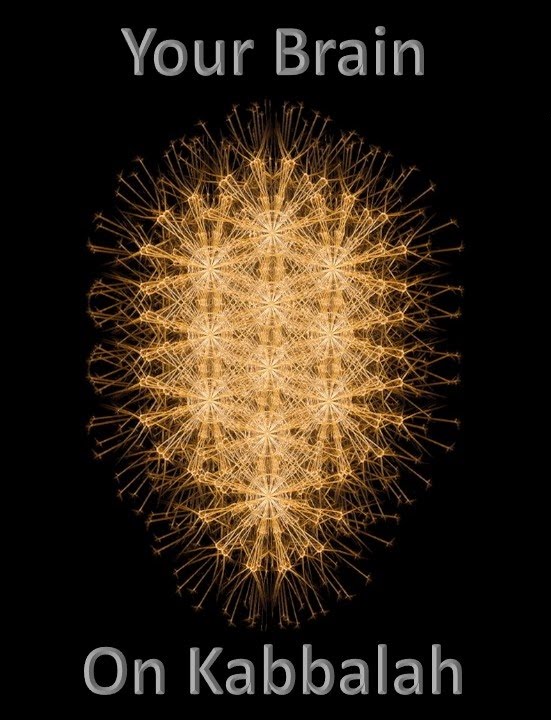
And please check out this book, The Enneagram and Kabbalah, Reading Your Soul

All you gotta do is think about how things literally play out logically.
It's all so simple!!

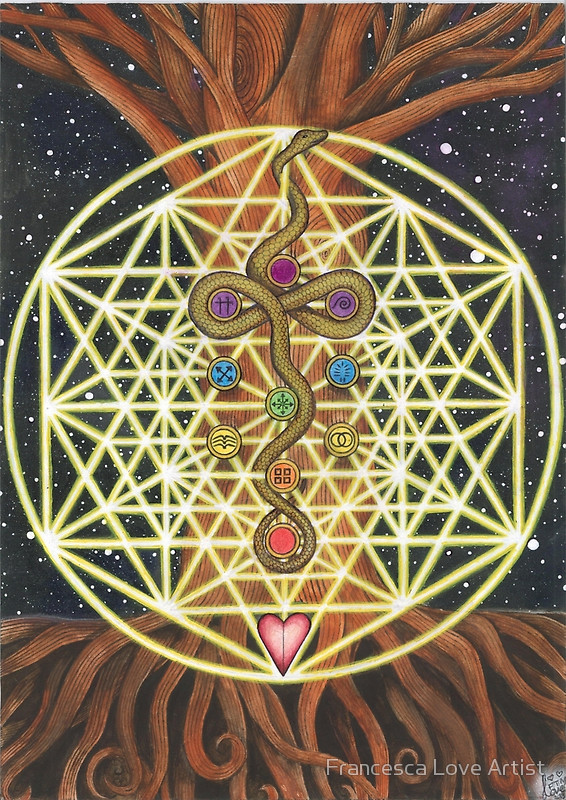
So therefore we can understand and explain with utter ease exactly what the "Flower of Life" symbolism is really all about. It is about how from 1 comes many, and how many is actually just 1. That You are God manifest.



If you are noticing everything merge it is because you are ascending through enlightenment and you are gaining awareness of your Divine Self and of God's intentions for you in your life. This is...

And please check out this book, The Enneagram and Kabbalah, Reading Your Soul

All you gotta do is think about how things literally play out logically.
It's all so simple!!
Medieval Kabbalists believed that all things are linked to God through these emanations, making all levels in creation part of one great, gradually descending chain of being. Through this any lower creation reflects its particular characteristics in Supernal Divinity.
Hasidic thought extends the Divine immanence of Kabbalah by holding that God is all that really exists, all else being completely undifferentiated from God's perspective. This view can be defined as monistic panentheism. According to this philosophy, God's existence is higher than anything that this world can express, yet he includes all things of this world within his Divine reality in perfect unity, so that the Creation effected no change in him at all. This paradox is dealt with at length in Chabad texts.[49]


So therefore we can understand and explain with utter ease exactly what the "Flower of Life" symbolism is really all about. It is about how from 1 comes many, and how many is actually just 1. That You are God manifest.


The Origin of Evil...
So it is the Yin Yang, both must exist so the other can. There could be no good if there were no evil to make it so good. And there would be no light without darkness to distinguish it.
The last part makes a great point, that "Evil" is actually an imbalance of certain qualities which when balanced are extremely good, but in imbalance become horrible. This is why we must seek moderation and find balance.
Now here are some pictures I'd like to share that show some interesting parallels with Masonic symbolism in art.


All of this stuff should not only be easy to figure out for anyone who has made it this far in the study, but it should also start making a lot of sense when you think about it for awhile.
The Role of Man
You are intended to become aware of the Divine, and then to Unite with it increasingly as you journey through this infinite Spiritual existence eternally.
Among problems considered in the Hebrew Kabbalah is the theological issue of the nature and origin of evil. In the views of some Kabbalists this conceives "evil" as a "quality of God", asserting that negativity enters into the essence of the Absolute. In this view it is conceived that the Absolute needs evil to "be what it is", i.e., to exist.[51] Foundational texts of Medieval Kabbalism conceived evil as a demonic parallel to the holy, called the Sitra Achra (the "Other Side"), and the Kelipot/Qliphoth (the "Shells/Husks") that cover and conceal the holy, are nurtured from it, and yet also protect it by limiting its revelation. Scholem termed this element of the Spanish Kabbalah a "Jewish gnostic" motif, in the sense of dual powers in the divine realm of manifestation. In a radical notion, the root of evil is found within the 10 holy Sephirot, through an imbalance of Gevurah, the power of "Strength/Judgement/Severity".
So it is the Yin Yang, both must exist so the other can. There could be no good if there were no evil to make it so good. And there would be no light without darkness to distinguish it.
The last part makes a great point, that "Evil" is actually an imbalance of certain qualities which when balanced are extremely good, but in imbalance become horrible. This is why we must seek moderation and find balance.
Now here are some pictures I'd like to share that show some interesting parallels with Masonic symbolism in art.


All of this stuff should not only be easy to figure out for anyone who has made it this far in the study, but it should also start making a lot of sense when you think about it for awhile.
The Role of Man
Kabbalistic doctrine gives man the central role in Creation, as his soul and body correspond to the supernal divine manifestations. In the Christian Kabbalah this scheme was universalised to describe harmonia mundi, the harmony of Creation within man.[52] In Judaism, it gave a profound spiritualisation of Jewish practice.
You are intended to become aware of the Divine, and then to Unite with it increasingly as you journey through this infinite Spiritual existence eternally.
I looked at this pic closer and was very amused to find in the bottom left a peacock. To me that's a sign I'm definitely "on the right path" here.

Got tons more coming soon.
Oh and on the prior page remember I said in Tarot that Strength was #11?
But your deck of cards says #8 huh? I guess your deck is wrong because it was always #11 back in the day.
Major Arcana wiki

Got tons more coming soon.
Oh and on the prior page remember I said in Tarot that Strength was #11?
But your deck of cards says #8 huh? I guess your deck is wrong because it was always #11 back in the day.
Major Arcana wiki
Strength is traditionally the eleventh card and Justice the eighth, but the influential Rider-Waite-Smith deck switched the position of these two cards in order to make them a better fit with the astrological correspondences worked out by the Hermetic Order of the Golden Dawn, under which the eighth card is associated with Leo and the eleventh with Libra.
Today many decks use this numbering, particularly in the English-speaking world. Both placements are considered valid.
edit on 3/15/2018
by muzzleflash because: (no reason given)
edit on 3/15/2018 by muzzleflash because: (no reason given)
Holy#
Just everything...
Tonight I've had a million thoughts
So many shades of one
Love
Wow... Love
Deep inside of me
Universally
Cosmically
It sets me free
I can finally Be
I see
Im the sea
Im energy
It's fluently
Infinitely
Eternally
She
Me
We
edit on 3/15/2018 by muzzleflash because: (no reason given)

Know the Truth.
Truth is God.
God is All.
Watch that video and listen intently.


Is Consciousness the Unified Field?
Is the only thing that actually exists at the deepest most fundamental level of reality just Thought? Intelligence. Self Awareness. Information.
God-Goddess
Oneness
Uni-Verse
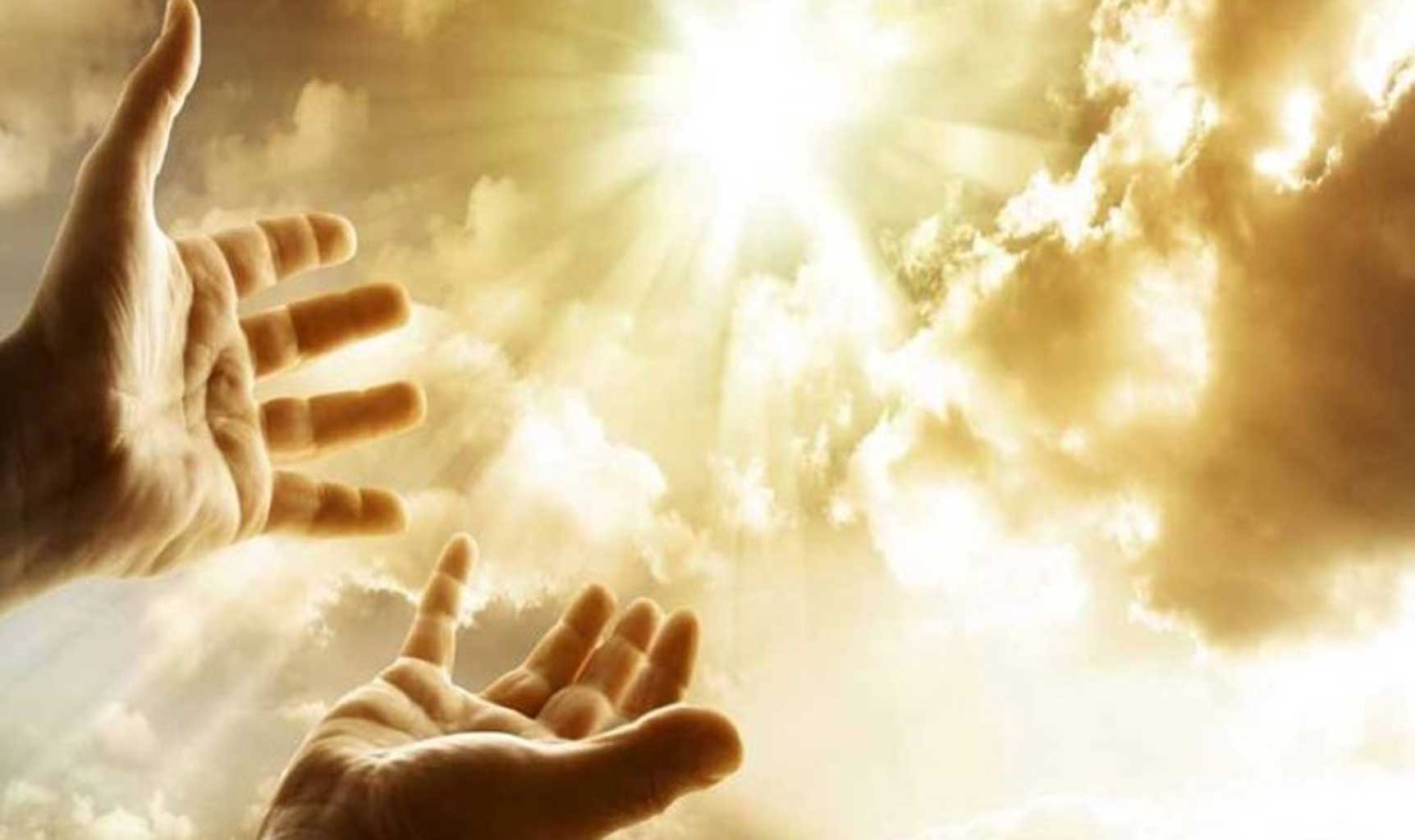

Is the only thing that actually exists at the deepest most fundamental level of reality just Thought? Intelligence. Self Awareness. Information.
God-Goddess
Oneness
Uni-Verse




Peacock - Dali
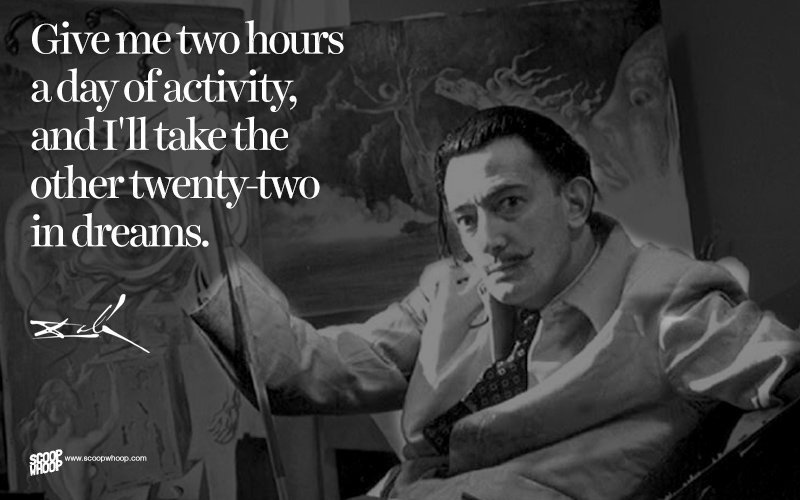

Dreams of Alice - Dali

Dream Caused by the Flight of a Bee around a Pomegranate - Dali

The Dream - Dali

edit on 3/16/2018 by muzzleflash because: (no reason given)


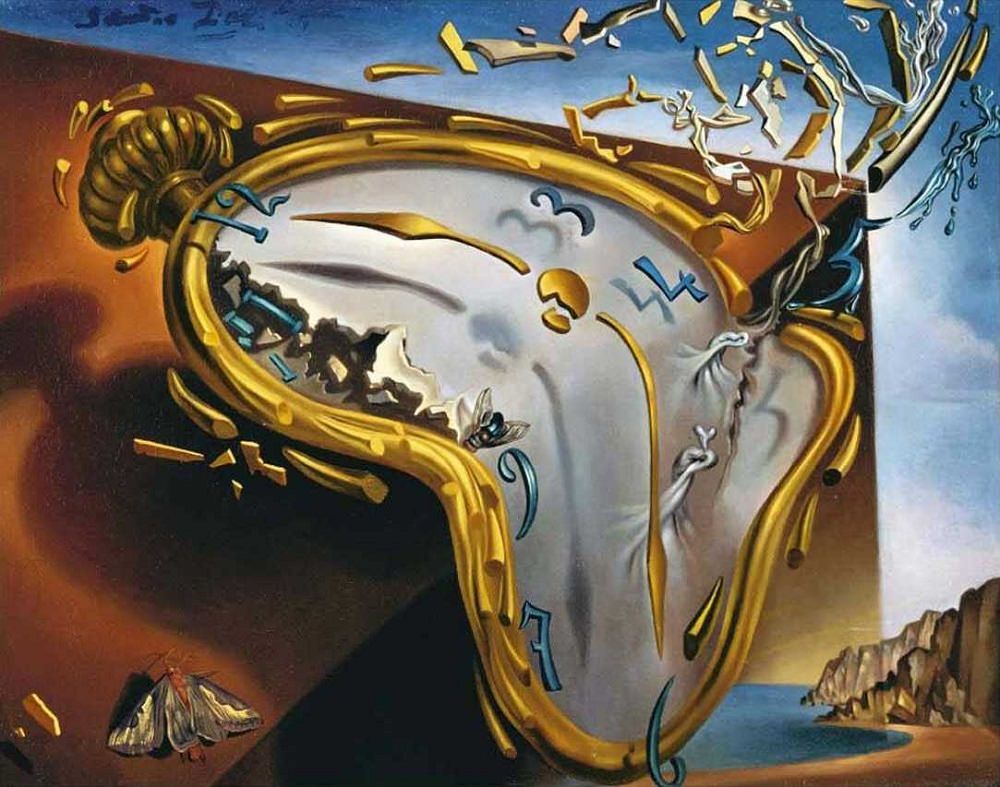
Melting Watch - Dali

The Dream of Venus - Dali

Broken Bridge and the Dream - Dali

The Dream Approaches - Dali
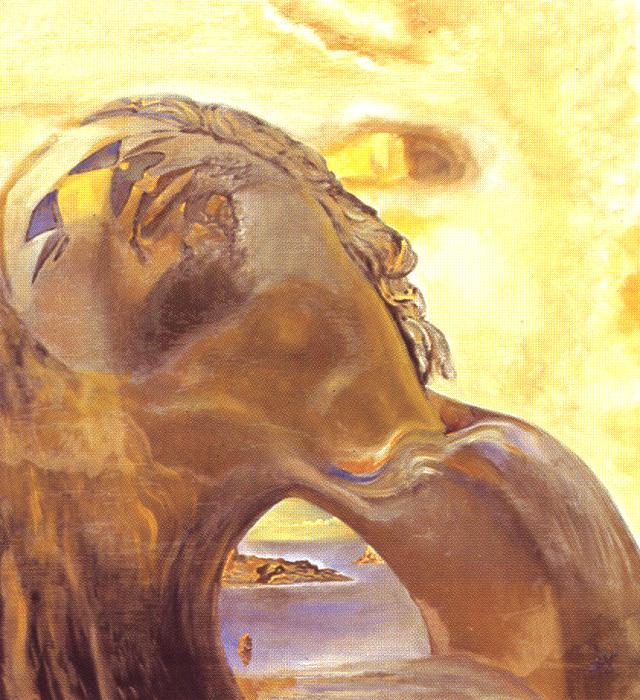
Othello Dreaming Venice - Dali
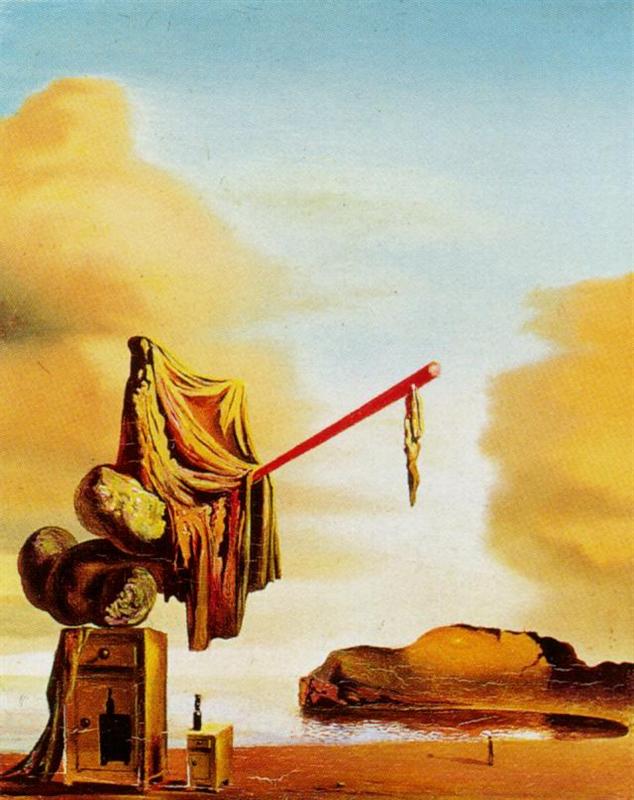
Dreams on the Beach - Dali

Mercury and Argus - Dali

I meditate every day, for hours and hours...

And I don't mind taking advice from Dali or Dalai
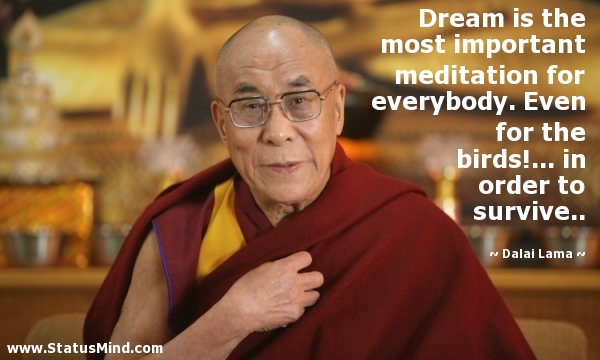

You better watch out, cuz I've been Radicalized

and I'm gonna take you on Safari to discover your nature, your inner flower child, on this trip we'll call the

I Am....

I Am the Forest...

I Am the Meadow....

I Am the Citadel on the Peak...

I Am the Temple where I Dream...






And this thread is

edit on 3/17/2018 by muzzleflash because: (no reason given)
Ever since I decided I needed to finish this thread and been adding bits n pieces I've been in such a positive mood. Writing this thing is so fun. I
get to be totally surprising and just pull stuff outta my hat and weave into this Dreamy tapestry.
I love embracing inspiration from everywhere around me and then mixing it into this unique conceptual flow that I can call my own creation. It's not perfect but I'm happy.
This ain't the rabbit hole you're used to Alice, these are the Caverns of the Badger and we'll delve ever deeper into ourselves as we journey forth!
Hopefully we've washed all the doubts away by now, but just in case we haven't I'll do my best to unravel the marvel with finesse.
Who here wants to know more esoterica as we listen closely to the messages from the Angels? Shall we unfurl this scroll of secrets a bit more and peer into the mystical knowledge of the Gods? Of course we should, it'll be so fun!
Everything can be new again as we revel in our inner experiences and bask in the light of the divine cosmic.
Let's think of this as our...
I love embracing inspiration from everywhere around me and then mixing it into this unique conceptual flow that I can call my own creation. It's not perfect but I'm happy.
This ain't the rabbit hole you're used to Alice, these are the Caverns of the Badger and we'll delve ever deeper into ourselves as we journey forth!
Hopefully we've washed all the doubts away by now, but just in case we haven't I'll do my best to unravel the marvel with finesse.
Who here wants to know more esoterica as we listen closely to the messages from the Angels? Shall we unfurl this scroll of secrets a bit more and peer into the mystical knowledge of the Gods? Of course we should, it'll be so fun!
Everything can be new again as we revel in our inner experiences and bask in the light of the divine cosmic.
Let's think of this as our...
Ok so here's a giant secret:
Occasionally to communicate with Spirit I will utilize various methodologies, one highly accurate method being a "random word generator".
This thing can be far more powerful than other traditional methods of divination, and in my experience it is utterly mindblowing and impossibly awesome.
I rarely use it though because I don't want to become abusive, I've learned my lessons there.
I have tons of stories to tell about how this thing has relayed messages from beyond that are so statistically improbable....
Anyways here, tonight just a few min ago I went outside and had a cig - and I asked this 1 question after stargazing a bit:
Q) What do the ATSers reading this thread think about me currently?
A)

It said "Badger"????
You've gotta be kidding me!!
Hahahah Magical!!!
Impossible.
I did it once. Wtf right???
Occasionally to communicate with Spirit I will utilize various methodologies, one highly accurate method being a "random word generator".
This thing can be far more powerful than other traditional methods of divination, and in my experience it is utterly mindblowing and impossibly awesome.
I rarely use it though because I don't want to become abusive, I've learned my lessons there.
I have tons of stories to tell about how this thing has relayed messages from beyond that are so statistically improbable....
Anyways here, tonight just a few min ago I went outside and had a cig - and I asked this 1 question after stargazing a bit:
Q) What do the ATSers reading this thread think about me currently?
A)

It said "Badger"????
You've gotta be kidding me!!
Hahahah Magical!!!
Impossible.
I did it once. Wtf right???
edit on 3/17/2018 by muzzleflash because: (no reason given)
edit on 3/17/2018 by muzzleflash
because: (no reason given)
a reply to: muzzleflash
The theory behind how the generator works is simple quantum mechanics.
There is one basic Law of the Universe that governs how this works (other laws apply but to lesser effect).


The ghost of Einstein and I agree about this, my random word generator breaks the "rule of chaos" on the first shot consistently, and so therefore...

The theory behind how the generator works is simple quantum mechanics.
There is one basic Law of the Universe that governs how this works (other laws apply but to lesser effect).


The ghost of Einstein and I agree about this, my random word generator breaks the "rule of chaos" on the first shot consistently, and so therefore...

To speak a corrupted language helps to bind one forever in foolishness....
Esoteric and/or Exoteric is a word we use in Spanish. It does not denote secrets, whether sacred or profane. But, in irony, it alludes to the knowing of aecrets, albeit sacred and/or profane.
The true word in proper use is pronounced: "Hysterico." Aka Panic Attack.... Anxiety Attack...
Mental Health.
Biblically.... The colors have meaning, and they relate to hysteria. Milk (White) and Honey (Yellow).
White represents anxiety. Leaves one pale.
Yellow represents phobia. Leaves one insecure.
The light of men that John 1 speaks of has much to tell of the truth of the milk and honey and of the truth of the ten plagues. Man-made diasters. Freemasonry is somewhat the cure for ignorance and tyranny and fanaticsim of our own foolish conceit. All in all "Hysteria" is acceptable for those who know the light of men.
Esoteric and/or Exoteric is a word we use in Spanish. It does not denote secrets, whether sacred or profane. But, in irony, it alludes to the knowing of aecrets, albeit sacred and/or profane.
The true word in proper use is pronounced: "Hysterico." Aka Panic Attack.... Anxiety Attack...
Mental Health.
Biblically.... The colors have meaning, and they relate to hysteria. Milk (White) and Honey (Yellow).
White represents anxiety. Leaves one pale.
Yellow represents phobia. Leaves one insecure.
The light of men that John 1 speaks of has much to tell of the truth of the milk and honey and of the truth of the ten plagues. Man-made diasters. Freemasonry is somewhat the cure for ignorance and tyranny and fanaticsim of our own foolish conceit. All in all "Hysteria" is acceptable for those who know the light of men.
edit on 17-3-2018 by Pinocchio because: (no reason given)
new topics
-
New job to help stop school shootings
Social Issues and Civil Unrest: 22 minutes ago -
Covid Jab and the Alien Invasion
ATS Skunk Works: 6 hours ago -
Quantum Computer’s, Plasmoid’s, & UAP’s
Aliens and UFOs: 7 hours ago -
Political Warfare & The Resister Special Forces Underground
Political Ideology: 10 hours ago -
Trump Cancel trip to New Jersey because of drones
Aliens and UFOs: 10 hours ago
top topics
-
School shooting in Madison Wi.
Social Issues and Civil Unrest: 15 hours ago, 10 flags -
Prisoner CNN helped free from Syrian prison was actually notorious Assad regime torturer: report
Mainstream News: 17 hours ago, 9 flags -
Political Warfare & The Resister Special Forces Underground
Political Ideology: 10 hours ago, 6 flags -
Covid Jab and the Alien Invasion
ATS Skunk Works: 6 hours ago, 6 flags -
Trump Cancel trip to New Jersey because of drones
Aliens and UFOs: 10 hours ago, 5 flags -
Quantum Computer’s, Plasmoid’s, & UAP’s
Aliens and UFOs: 7 hours ago, 2 flags -
New job to help stop school shootings
Social Issues and Civil Unrest: 22 minutes ago, 1 flags
active topics
-
New job to help stop school shootings
Social Issues and Civil Unrest • 1 • : AlroyFarms -
So this is what Hamas considers 'freedom fighting' ...
War On Terrorism • 294 • : FlyersFan -
Defending the need for adherence to Old Testament commandments under the new covenant of Christ
Conspiracies in Religions • 36 • : ADVISOR -
Russias War Against Religion in Ukraine
World War Three • 10 • : Freeborn -
School shooting in Madison Wi.
Social Issues and Civil Unrest • 43 • : PorkChop96 -
Covid Jab and the Alien Invasion
ATS Skunk Works • 10 • : Dalamax -
Quantum Computer’s, Plasmoid’s, & UAP’s
Aliens and UFOs • 6 • : Dalamax -
Labour Plotting to Postpone May's Council Elections ?
Regional Politics • 5 • : gortex -
Rant. I am sick of people saying the police are revenue raising.
Rant • 15 • : PorkChop96 -
-@TH3WH17ERABB17- -Q- ---TIME TO SHOW THE WORLD--- -Part- --44--
Dissecting Disinformation • 3734 • : duncanagain
